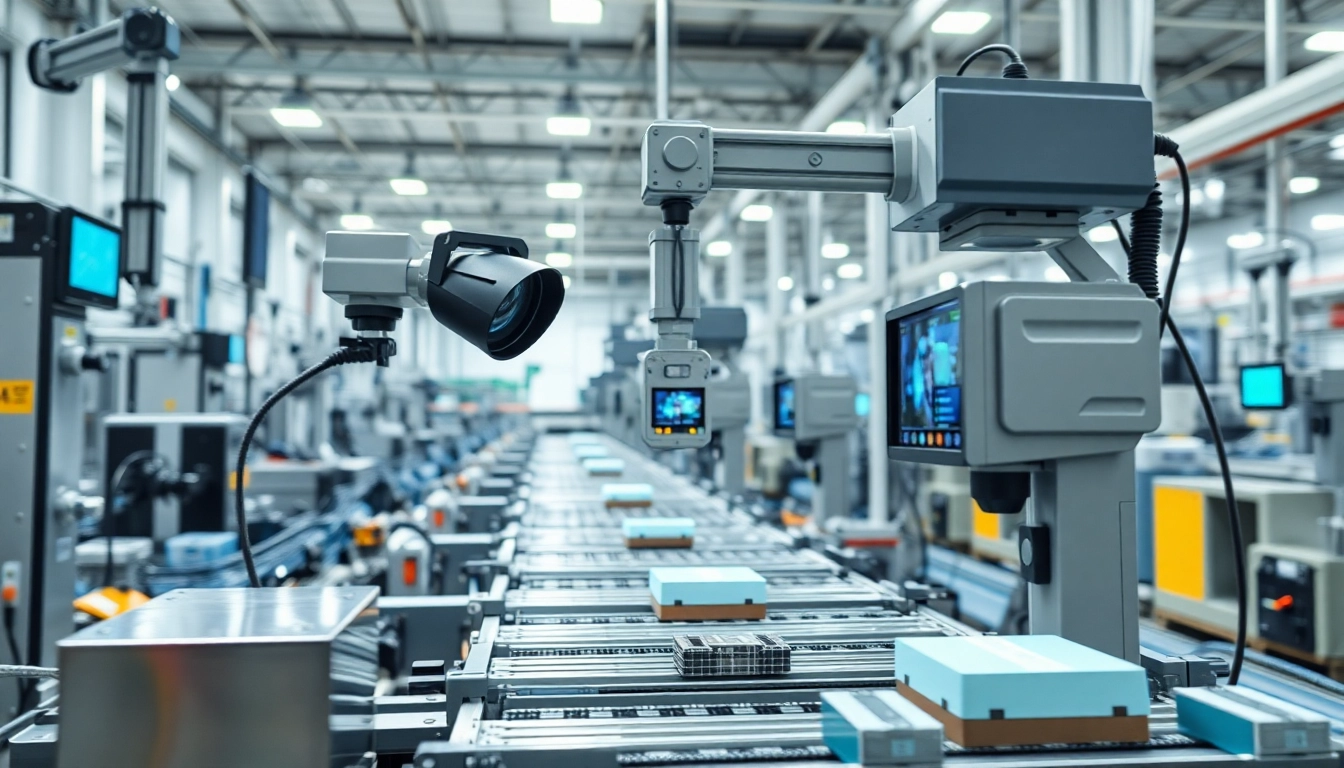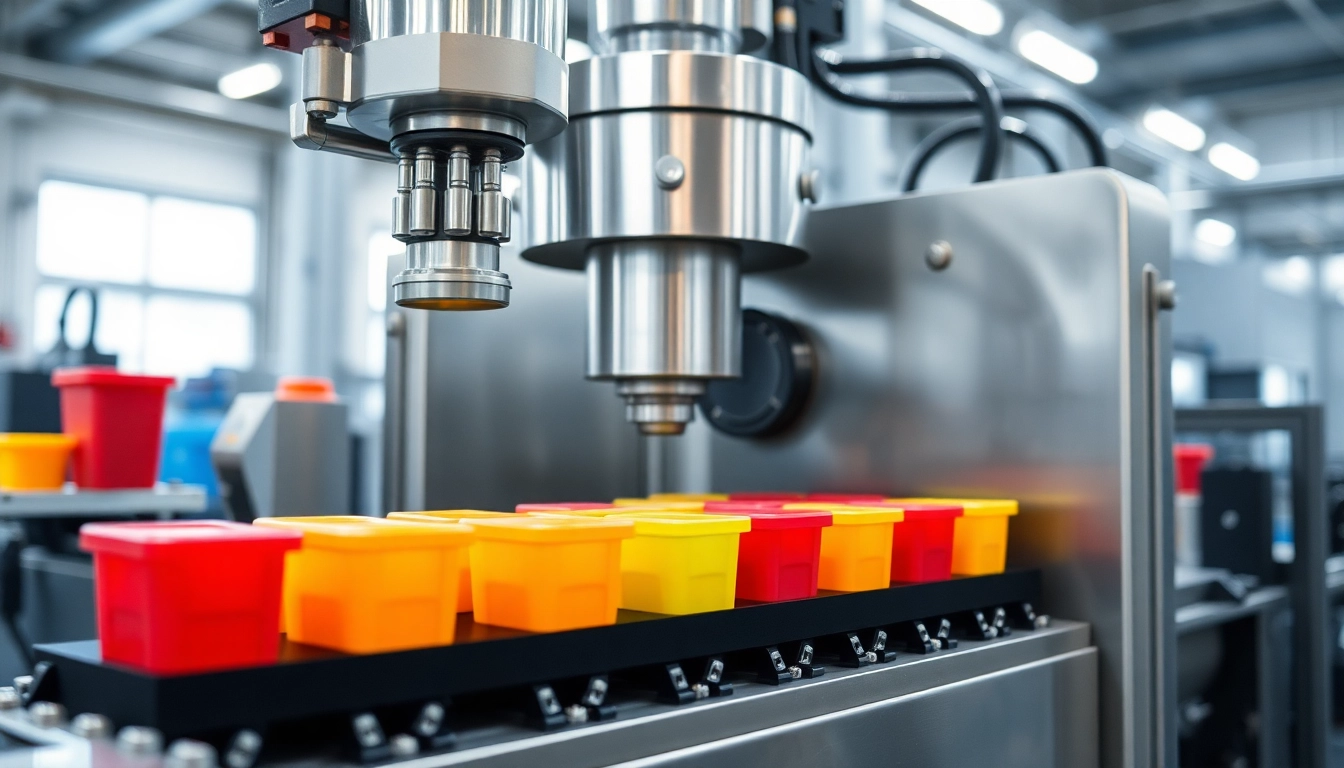Overview of Machine Vision Technology
As industries seek to enhance efficiency and precision, machine vision has become a cornerstone of modern automation and inspection processes. This technology employs cameras, sensors, and specialized software to provide automated imaging-based inspection and analysis. Whether in manufacturing, logistics, or quality control, machine vision systems enable machines to interpret and act upon visual data, facilitating rapid decisions and high reliability.
What is Machine Vision?
Machine vision refers to the technology and methods that allow computers to interpret visual information from the world around them. By utilizing cameras and image processing algorithms, machine vision systems can automatically analyze pictures for various applications. Unlike human vision, which is subjective and often influenced by perception, machine vision provides consistent and objective evaluations. This is critical in environments where precision and speed are paramount.
Key Components of Machine Vision Systems
A typical machine vision system incorporates several essential components to facilitate its functionality, including:
- Cameras: The eyes of the system, capturing images in various formats and resolutions depending on the application.
- Lighting: Proper illumination is crucial for reducing shadows and highlights, ensuring clear imaging that enhances the quality of analysis.
- Processing Units: Powerful processors analyze the captured images, using algorithms to identify patterns, defects, or other parameters of interest.
- Software: Specialized software interprets the data, allowing for tasks such as image filtering, object recognition, or defect analysis.
- Actuators: In some systems, actuators can be used to perform actions based on the visual data, like sorting or removing defective items from a production line.
Evolution and Trends in Machine Vision
The evolution of machine vision technology has been rapid, transitioning from basic applications of image capture to advanced systems employing artificial intelligence (AI) and machine learning. Initially, machine vision was focused primarily on the manufacturing sector for quality control. Over time, the technology has expanded into various industries, including healthcare and automotive, with trends that suggest ongoing growth.
This growth is evidenced by the increasing adoption of vision-guided robotics and deep learning algorithms that allow more sophisticated analysis and decision-making processes in real time. As more industries recognize the benefits of integrating machine vision into their operations, the technology will continue to evolve and innovate.
Applications of Machine Vision in Industry
Quality Control and Inspection
One of the primary applications of machine vision is in the field of quality control and inspection. Inspection systems can verify the integrity of products coming off production lines. For instance, machine vision can detect surface defects, measure components, or ensure compliance with specified tolerances. This application dramatically reduces the need for manual inspection, thus saving time and labor costs. Successful implementations can enhance the overall quality assurance process, thereby minimizing the risk of defective products reaching consumers.
Guidance Systems for Robotics
Machine vision technology is integral to robotics, providing necessary visual data to navigate and interact with surroundings safely. In warehouse environments, robots equipped with machine vision can identify product locations, navigate through aisles, and ensure accurate picking and packing operations. Industries are increasingly relying on these systems, as they can adapt to changes in the environment and improve workflow efficiency. Guidance systems are continuously being optimized to handle the complexities of real-world scenarios, making them invaluable in modern automation efforts.
Barcode and Package Verification
Machine vision systems play a critical role in the logistics and packaging industries by enabling rapid barcode and package verification. Automated systems can check labels and ensure that they match the expected standards in real-time, thereby enhancing operational efficiency and preventing errors. This technology allows for real-time data tracking throughout the supply chain, contributing to enhanced inventory management and customer satisfaction. By automating these verification processes, companies can further reduce the likelihood of human error.
Benefits of Implementing Machine Vision
Enhanced Accuracy and Precision
One of the most significant benefits of machine vision is the enhanced accuracy and precision it offers. Unlike human operators, machine vision systems are not influenced by fatigue or subjective judgment. They consistently provide high-quality imaging and analysis, which helps manufacturers maintain stringent quality standards. The accuracy of such systems can lead to lower defect rates and ultimately greater product reliability, which is critical in maintaining customer trust.
Cost Reduction through Automation
Implementing machine vision technology can result in substantial cost savings. By automating repetitive inspection tasks that would otherwise require human labor, companies can reduce labor costs and increase throughput. Furthermore, the increased efficiency generally leads to less waste—which translates to financial savings. As the initial investment in machine vision systems can often be recouped quickly through these savings, many companies struggle to justify not investing in such technology.
Real-time Data Processing for Decision Making
The ability to process visual data in real-time is another compelling advantage of machine vision. This feature equips industries with the capability to make fast and informed decisions, thus enhancing production agility. In scenarios such as quality control or incident diagnostics, having instant access to visual data enables timely actions to be taken, which can significantly optimize production operations and reduce downtime.
Challenges in Machine Vision Implementation
Integration with Existing Systems
Integrating machine vision systems with established processes can pose significant challenges. Companies often find that their existing machinery and workflows are not fully compatible with new technology. To overcome this challenge, conducting thorough assessments of current systems before implementation and opting for flexible machine vision solutions that can easily integrate into existing operations are advisable. Collaboration with technology vendors can provide essential insights for smoother integration.
Costs and Budget Considerations
While machine vision can lead to long-term savings, the upfront costs can be a barrier for many organizations. Budget considerations must factor in not just the purchase of hardware and software, but also implementation, training, and maintenance expenses. A detailed cost-benefit analysis can help businesses understand the potential return on investment, guiding them in allocating budgets accordingly. It is often beneficial to start with pilot projects to validate concepts and refine approaches before committing to full-scale implementations.
Skill Set Requirements for Operation
The successful operation of machine vision systems requires a specific skill set that may not be prevalent in all organizations. Technical staff must be trained not only to operate the systems but also to analyze the data effectively and resolve any issues that arise. Investing in employee training or collaborating with external experts can close this skills gap and ease the transition into employing machine vision technology.
Future of Machine Vision Technology
Advancements in AI and Machine Learning
As artificial intelligence (AI) and machine learning continue to advance, machine vision will evolve to become even more sophisticated. These technologies will enable machine vision systems to identify and analyze patterns with increasing accuracy and adapt to new scenarios without requiring extensive reprogramming. This adaptability can vastly enhance the capabilities of machine vision, opening new avenues for applications across various industries.
Potential Growth Areas
Potential growth areas for machine vision technology include sectors such as healthcare, agriculture, and autonomous vehicles. In healthcare, machine vision can be applied to diagnostic imaging, enhancing accuracy and efficiency in disease detection. Agricultural automation through machine vision can optimize crop yield inspections, pest detection, and harvest predictions. Likewise, in the automotive realm, machine vision plays a pivotal role in developing and improving autonomous driving capabilities. These sectors represent significant opportunities for innovation and growth.
Ethical Considerations and Compliance
As machine vision expands, ethical considerations concerning data privacy and compliance with regulatory frameworks will come into sharper focus. Industries must ensure that they handle data responsibly and adhere to legal requirements, particularly as they capture more visual data in real-time. Developers and regulators will need to establish guidelines that encourage innovation while protecting individual rights and promoting public trust in automated systems.


